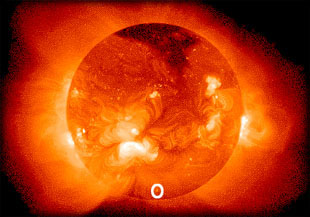|
Page 2 of 2 |
|||||
Sunspots -Modern Research |
|||||
|
|
|
More About the
Sun |
|
|
The scale of the
sun is hard to fathom. The sun is so large and so
dense that it takes about 50,000,000 years for
energy produced at its core to make its way to the
sun's surface! |

